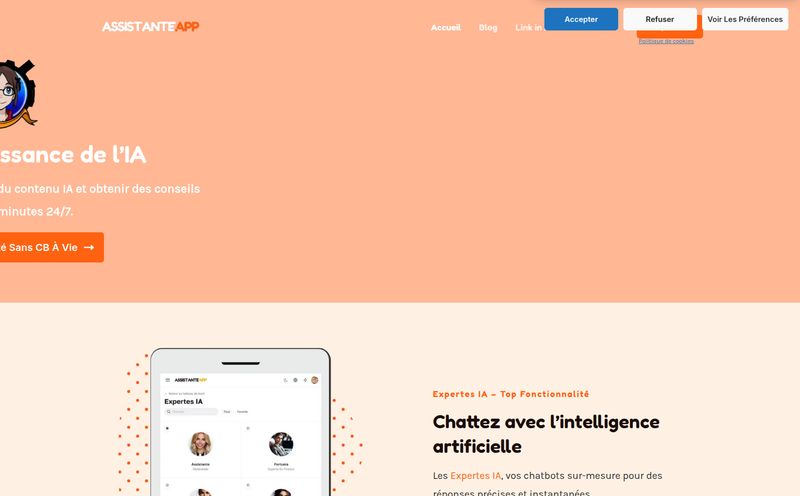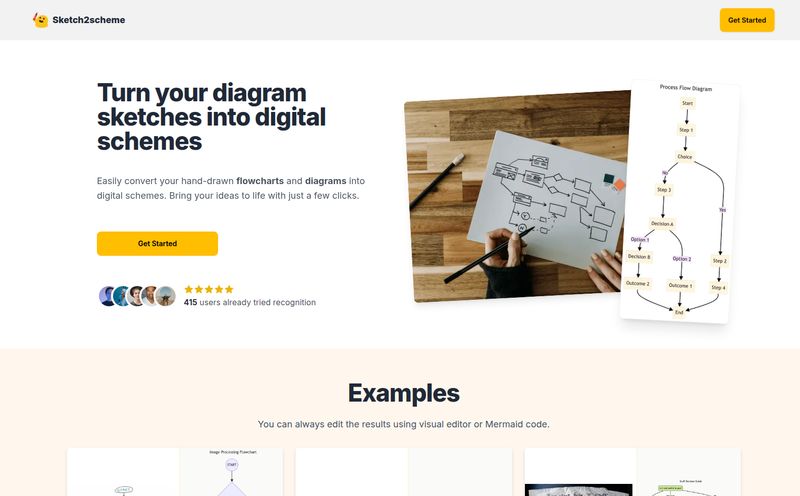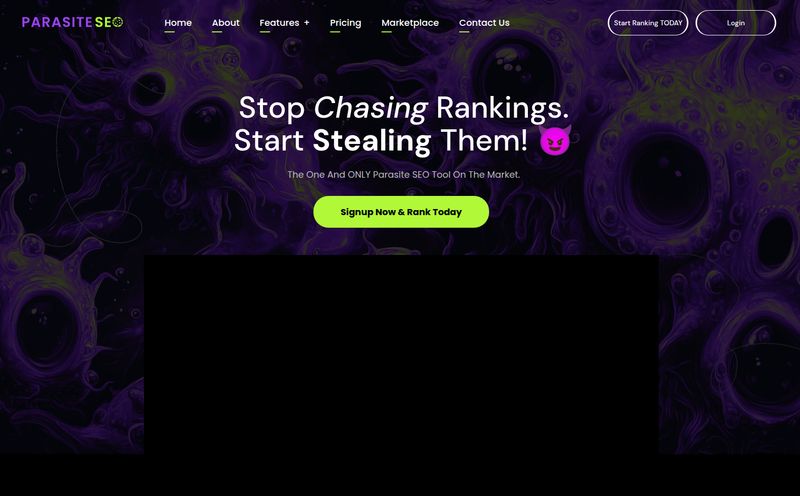For years, the world of image editing has been a two-party system. You either sell your soul (and a hefty monthly subscription) to the Adobe gods, spending weeks learning the arcane rituals of Photoshop, or you fumble around with free online tools that plaster your work with watermarks and have all the finesse of a sledgehammer. As a blogger and marketer, I've lived in that frustrating gap for what feels like an eternity.
I can’t tell you how many hours I’ve wasted tracing product outlines with the magnetic lasso tool, only to have it snap to the wrong pixel at the last second. The rage is real. So, when a new wave of AI-powered tools started cropping up, promising to do the heavy lifting for us, my interest was definitely piqued. One name that kept floating around my circles was Depix. It promises simplicity, power, and AI smarts. But does it deliver? I decided to take a closer look.
So, What Exactly is Depix?
At its heart, Depix is an interactive, AI-powered online image editing platform. Think of it less as a blank canvas and more as a creative co-pilot. Instead of giving you a million buttons and menus, it focuses on the tasks we actually do most of the time: removing backgrounds, creating new images from existing parts, and making everything look like it belongs together. The workflow is refreshingly simple: you can upload an image, intelligently cut out the bits you want, and paste them into a new scene. It’s the digital equivalent of scrapbooking, but with an AI assistant who has a PhD in graphic design.
The Standout Features That Matter to Marketers
Okay, let's get into the meat of it. A tool is only as good as what it can do for your workflow, your traffic, and your bottom line. Here’s where I think Depix really shines.
Background Removal on Autopilot
This is the big one for anyone in e-commerce or content creation. Getting a clean, transparent background on a product photo or a headshot used to be a specialized skill. With Depix, the AI does the work. This isn't just a time-saver; it’s a game-changer. It means you can create professional-looking product listings for your Shopify store or clean headshots for a guest post in minutes, not hours. A far cry from teh old days of meticulously clicking around an object with the pen tool.

Visit Depix
Composing Scenes Like a Pro (Without the Pro Price Tag)
This is where the magic happens. Depix lets you take elements from different images and combine them into a single, cohesive picture. Want to place your product on a pristine marble countertop or a rustic wooden table? Upload your product shot, snip it out, and drop it into a new background. This is incredibly powerful for creating custom blog headers, featured images, and social media graphics that don't look like generic stock photos. It gives you the power to tell a visual story.
Mastering Light and Shadow
Here’s a little secret from the design world: nothing screams “fake” more than bad lighting. You can composite two images perfectly, but if the shadows are wrong, our brains know something is off. Depix includes tools to adjust lighting and add realistic shadows to your cutouts. This tiny detail is what elevates an image from a quick cut-and-paste job to a professional-looking composition. It’s the difference between an image that just exists and one that converts.
A Glimpse into the Advanced AI Toolkit
Beyond the basics, Depix hints at some seriously advanced tools. Their site mentions things like Depix DesignLab, Text to HDRI, SceneShift, StyleDrive, and CADviz. While details are a bit sparse, we can make some educated guesses. Text to HDRI sounds like it could generate entire lighting environments from a text prompt—wild! SceneShift might allow for dramatic background alterations, and CADviz is clearly aimed at professionals in architecture and engineering who need high-quality visualizations. This suggests Depix has ambitions far beyond being a simple background remover.
The Good, The Bad, and The AI
No tool is perfect, right? Here’s my breakdown of the pros and cons from a user's perspective.
First, the good stuff. The platform is incredibly intuitive. I love tools that don't make me hunt for a YouTube tutorial just to get started. The AI-powered features are genuinely efficient and the whole platfrom feels versatile enough for bloggers, social media managers, and small e-commerce stores. But the most interesting pro, for me, is the potential for a secure, behind-firewall installation. This is HUGE. For larger companies worried about data privacy or protecting proprietary product images, the ability to run this on-premise is a massive selling point that most cloud-based competitors just don’t offer.
Now for the reality check. That awesome on-premise feature? It probably requires a costly enterprise solution, so it's not for the solo blogger. There’s also the classic AI debate: does it limit creative control? If you’re a graphic designer who lives and breathes bezier curves, you might feel constrained. For most of us creating marketing assets, speed and convenience will trump pixel-perfect control every time. And, as is common with SaaS platforms, the full suite of features will likely depend on your subscription level. So, the experience could differ based on how much you pay.
What's the Damage? A Look at Depix Pricing
This is the million-dollar question, isn't it? As of my review, Depix doesn't have a public pricing page. This is a pretty common strategy for B2B-focused SaaS companies, especially those with enterprise-level offerings. It usually means they prefer to provide custom quotes based on a company's size and needs. It can be a little frustrating when you just want a quick answer, but it makes sense from their perspective. My advice? Head over to their website and reach out to them directly. They might have a free trial or a demo you can play with to see if it’s the right fit before you talk numbers.
My Final Take: Who is Depix Really For?
After digging in, I have a pretty clear idea of who will fall in love with Depix. If you're a content creator, a small business owner, a social media manager, or part of a nimble marketing team, this tool could become your new best friend. It’s for people who need to create high-quality, non-generic visuals quickly without a steep learning curve or a massive budget for a designer.
Who might want to stick with their current tools? High-end commercial photographers and graphic designers who need the granular, manual control that the Adobe Creative Suite provides. Depix isn't trying to be Photoshop; it's trying to make Photoshop-quality results accessible to everyone else. And in my opinion, it’s doing a darn good job of it.
Frequently Asked Questions about Depix
What is Depix primarily used for?
Depix is best for quickly editing images using AI. Its main uses include removing backgrounds from photos, combining elements from different images into a new scene, and adjusting lighting and shadows to create realistic, professional-looking graphics for websites, social media, and e-commerce.
Is Depix free to use?
Depix doesn't currently display public pricing tiers. This often means they use a quote-based system, especially for business clients. It's best to visit their official website or contact them to see if they offer a free trial, a freemium plan, or a demo.
Can I use images I create with Depix for my business?
Generally, yes. Tools like this are designed for commercial use. However, it's always smart to read the Terms of Service for any platform you use. This will clarify ownership rights and any restrictions on use. You can usually find the ToS in the website's footer.
How is Depix different from a tool like Photoshop?
The main difference is the approach. Photoshop is a massive, manual toolkit that gives you control over every single pixel. Depix is an AI-driven assistant that automates the most common and tedious tasks, like cutting out objects and matching lighting, to deliver faster results with less technical skill required.
Is Depix a good choice for companies with strict data security?
It can be a very strong choice. One of its standout features is the potential for an on-premise, behind-firewall installation. This means a company can run the software on its own servers, which is a major benefit for protecting sensitive or proprietary images.
Wrapping It All Up
The world of digital creation is getting more exciting by the day, and tools like Depix are leading the charge. They're breaking down old barriers and empowering people who aren't trained designers to create truly beautiful and effective visuals. It’s about working smarter, not harder—a philosophy I can definitely get behind.
If you’ve been struggling with the old way of editing images, I’d say Depix is absolutely worth a look. It might just be the creative co-pilot you’ve been searching for.



